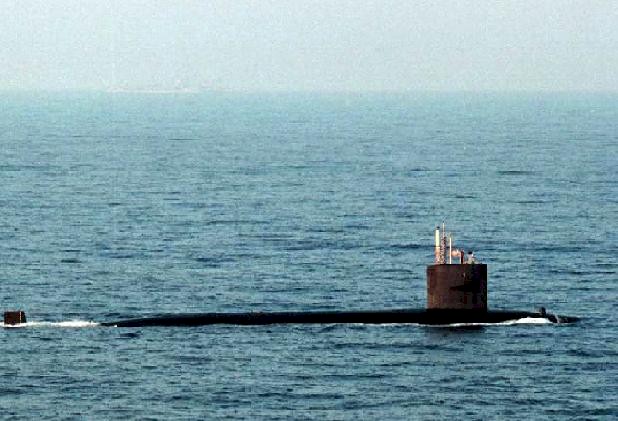Submarine Operational
Medicine
 Submarines are among the most clandestine
platforms in the United States arsenal, and thus have an important role in
both conventional and Special Operations. Understanding the capabilities and limitations of submarines
can aid embarked personnel in their medical planning for submarine-based
operations. Submarines are among the most clandestine
platforms in the United States arsenal, and thus have an important role in
both conventional and Special Operations. Understanding the capabilities and limitations of submarines
can aid embarked personnel in their medical planning for submarine-based
operations.
There are two basic types
of submarines in the United States Navy.
-
The Fleet Ballistic Submarine (SSBN) has the
primary mission of strategic deterrence.
-
Attack submarines (SSN) are versatile platforms involved in a
multitude of missions, including Special Operations.
Besides the ability to “lock-in/lock-out”
divers (as seen in the photo above) which all submarines have, some attack
submarines have been specially configured to carry swimmer delivery
vehicles housed in a shelter attached
to the hull of the submarine. These shelters can be operated while the
submarine is submerged to deploy Special Operations personnel. There are many medical considerations to these operations which are
outlined in this attached presentation.
The modern nuclear powered submarine is a veritable mini-city under the
sea. The propulsion plant is driven by a nuclear reactor, which
eliminates the need to refuel on a regular basis. The amount of food that can be brought onboard is usually the
limiting factor in the duration of a given mission. The submarine also makes its own potable water by
distillation, and the atmosphere is closely monitored and regulated by
equipment that adds submarine-produced oxygen and removes carbon dioxide,
carbon monoxide, and other impurities. The partial pressure of oxygen is maintained slightly below
atmospheric to decrease the risk of a fire onboard
 Life onboard a submarine is different from that of any other vessel. Space is obviously at a premium and is a critical limiting factor
with respect to equipment and gear brought on by embarked personnel. Mission support equipment will have to be carefully coordinated
with the submarine. Based on
space limitations, it is common for embarked personnel other than the crew
to sleep in temporary bunks in the torpedo room. With these obvious space limitations, especially those on the fast
attack, it is easy to understand why a large amount of medical gear is
stored in a variety of spaces throughout the submarine. Life onboard a submarine is different from that of any other vessel. Space is obviously at a premium and is a critical limiting factor
with respect to equipment and gear brought on by embarked personnel. Mission support equipment will have to be carefully coordinated
with the submarine. Based on
space limitations, it is common for embarked personnel other than the crew
to sleep in temporary bunks in the torpedo room. With these obvious space limitations, especially those on the fast
attack, it is easy to understand why a large amount of medical gear is
stored in a variety of spaces throughout the submarine.
Normally, a Submarine Independent Duty Corpsmen
provides the medical care for the entire crew of the submarine. Similar to Special Operations medics and corpsmen, the
Submarine Independent Duty Corpsman operates in relative isolation with
limited resources and equipment. To
qualify to become a Submarine IDC, one must complete an intensive yearlong
course that is similar to other Independent Duty Corpsmen courses, but
with some important differences. Besides training in medical diagnosis and treatment, management of medical
and surgical emergencies, occupational/environmental preventive medicine,
laboratory techniques, health
physics, and mathematics, Submarine IDC’s also receive instruction in
radiobiology, radiation health, nuclear weapons, atmosphere control, and
basic submarine skills.
Submarines are equipped with an extensive amount
of medical, dental, and surgical equipment, as well as an extensive
library of texts to aid the Submarine IDC’s in their duties.
Source: Operational Medicine 2001, Health
Care in Military Settings, NAVMED P-5139, May 1, 2001, Bureau
of Medicine and Surgery, Department of the Navy, 2300 E Street NW, Washington,
D.C., 20372-5300 |


